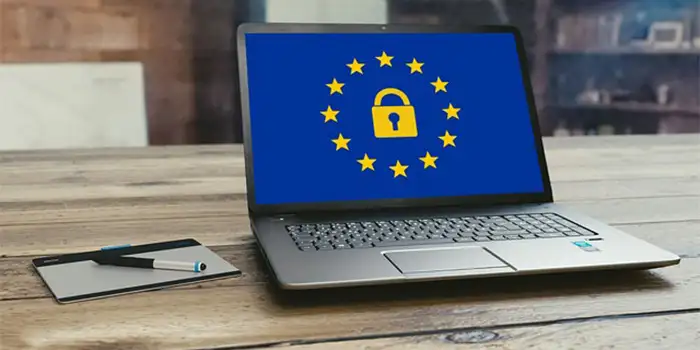When I think about “technology and security,” it’s not just about protecting software or passwords. It’s about safeguarding our homes, our personal information, and even our peace of mind.
Technology and security are two interrelated concepts that are critical for modern societies. It refers to the use of advanced tools, systems, and processes. This is to enhance the protection of individuals, organizations, and nations against threats and risks. The use of technology in security has become increasingly important because of the growing complexity of security threats.
In this article, you’ll learn:
- Why is security important nowadays
- How does technology improve security
- What are the common security attacks?
- Examples of technology in the security industry
Why is security important nowadays
For the past years, security has become increasingly important due to the prevalence of digital technology and the rise of cyber threats.
The globe has grown more linked than ever before because of the rapid growth of technology, making it simpler for criminals to conduct fraud, steal personal information, and do other harm.
Digital security is crucial because it prevents criminals from accessing or stealing our sensitive data. Much of our personal and financial information is now held online, making it subject to hacking and cyber assaults.
Cybersecurity measures such as firewalls, antivirus software, and encryption are required to keep our digital assets secure.
A few months ago, I experienced personally the effects of a lack of technological security. I assumed I got an email from my bank requesting me to update my account details.
Without hesitation, I clicked on the link and entered my personal information. It wasn’t until later that I realized that the email was a phishing scam.
Fortunately, I was unable to submit any personal information.
That encounter taught me the value of technology in security. It is not only important to safeguard our devices and data from cyber-attacks; it is also important to secure our identity and privacy.
Let’s not be too confident because sometimes it’s hard to identify a legitimate link or email.
Physical security is also necessary for the protection of persons and property. CCTV surveillance is an important technology for monitoring public spaces, residences, and businesses to curb illegal activity and identify criminal culprits.
I’ve seen the value of CCTV surveillance at work, where cameras monitor the premises and any suspicious behavior is instantly recognized.
How does technology improve security
Here are some of the ways in which technology empowers and enhances security.
1. High-definition cameras and sophisticated analytics
The security sector has been transformed by high-definition cameras with advanced analytics.
These cameras give an incredible degree of depth and precision, allowing security staff to detect and identify possible threats more quickly than ever before.
The cameras record high-quality video and use powerful analytics to identify facial characteristics, follow movements, and inform security professionals in real time if an illegal individual is spotted.
I found a real-life example of how these cameras and analytics improved security.
For instance, there was news that a shopping mall was able to prevent suspected shoplifters by deploying high-definition cameras with advanced analytics.
The cameras were configured to detect suspected shoplifters’ movements and behavior and inform security staff in real-time.
This technique reduced shoplifting incidences and improved the mall’s overall security.
2. Enhanced facial recognition and fingerprint scanning
Advanced technologies such as facial recognition and fingerprint scanning have significantly improved security.
These technologies employ a person’s unique physical traits to validate their identification, adding an extra degree of security to secure places, data, or equipment.
Complex algorithms are used in face recognition technology to recognize unique facial traits and match them to an individual’s profile in a database.
This technology is becoming more popular in security systems like airports, banks, and government buildings.
Only authorized workers may access protected locations or data using facial recognition, and any unwanted attempts are identified and blocked.
Similarly, fingerprint scanning technology uses unique fingerprints to validate a person’s identification.
This technology is commonly used in mobile devices, computers, and other portable devices to guarantee that sensitive data is only accessed by authorized individuals.
Physical access control systems, such as those used to enter protected areas or buildings, also employ fingerprint scanners.
3. Effective two-factor authentication
Two-factor authentication (2FA) is an advanced security feature that requires users to present two forms of identification to get access to an account or device.
This technique has dramatically increased security by making it more difficult to access sensitive data.
2FA usually entails two forms of identification: a password or PIN and a physical token or biometric identification, such as face recognition or fingerprint scanning.
This method ensures that even if a password or PIN is compromised, the account or device cannot be accessed without the extra authentication factor.
Several social media sites provide two-factor authentication, which requires users to submit extra information in addition to their username and password to access their accounts.
For my social media accounts, I employ two-factor authentication to safeguard the security of my information and data.
It provides an extra degree of security by forcing me to input a code or notice delivered to my phone or email in addition to my password.
4. Improve alarm systems
The advancement of technology has greatly improved the security industry, particularly alarm systems.
Before, security alarms were limited to traditional methods such as sensors and sirens that sounded when an intruder triggered them.
Nowadays, the use of technology such as cameras, motion detectors, and wireless connectivity has made alarm systems more effective. It detects and responds to security breaches more easily.
The ability of modern alarm systems to offer real-time warnings and notifications is one of their primary advantages.
Users may receive warnings and alerts about potential security breaches even while they are not on-site thanks to the integration of cell phones and other mobile devices. This improves response time and enables the user to take necessary action before the situation worsens.
For example, I heard of a homeowner who received a message on their mobile phone while at work that their security alarm had been activated.
They were able to check live footage from their security cameras on their smartphone and observed an intruder attempting to break into their home.
The homeowner immediately called the police, who responded and caught the invader. Here is a great illustration of how technological advancements have increased the efficiency of alarm systems.
5. Easier GPS tracking
GPS tracking is becoming increasingly important in today’s environment, particularly in security and transportation.
GPS tracking has gotten easier and more accurate as technology has advanced. It offers real-time location information with pinpoint precision.
The ease of use of modern GPS tracking devices is one of their primary advantages. Users can quickly track the position of cars, assets, and people thanks to the development of user-friendly interfaces and mobile apps.
These interfaces deliver real-time location data and notifications to users, making it easier for them to monitor and manage their assets.
GPS tracking technologies have also gotten more accessible and cheaper. Users may simply access and manage their GPS tracking systems from anywhere in the globe thanks to cloud-based technologies.
This has made GPS tracking more affordable to small enterprises and people who could not previously afford such devices.
What are the common security attacks?
There are many types of security attacks that people and organizations face today. These threats can take many forms such as digital, cyber, and human attacks. Let’s go over each of these in more detail:
Digital Security Attacks:
- Phishing: It involves sending false emails or messages that appear to be from a trustworthy source such as banks or social networking platforms. This is to deceive the receiver into providing their personal information such as passwords, credit card details, and other important accounts.
- Malware: This is a very common malicious software that may infect your computer or network by downloading files or visiting infected websites. It can also corrupt your computer by opening malicious email attachments. Once infected, malware will gain control of your device and steal important information.
Cyberattacks:
- DoS Attacks: This kind of cyberattack includes flooding a system or network with traffic in order so it will become inaccessible to users. DoS assaults are frequently carried out via a botnet, which is a network of compromised computers.
- APTs: This is conducted by skilled attackers to gain continuous access to a network or system. APTs can have several phases and can be unnoticed for months or even years.
Physical/Human Attacks:
- Theft: This is an act where someone will steal something from you. Stealing personal items such as laptops and cell phones are examples of physical theft. Theft is one of the most commonly committed crimes in the world.
- Vandalism: It involves causing physical damage or destruction such as shattering windows or defacing walls.
Overall, we must understand the different types of security attacks. It is important to take action and defend oneself or one’s organization.
This includes employing strong passwords and exercising caution when reading emails or communications from unfamiliar sources. Getting security measures such as firewalls and antivirus software is also great for added protection.
Examples of technology in the security industry
There are a lot of technology that is being used in the security industry to help safeguard a person and organization against security risks. Here are a few examples:
Surveillance cameras
Surveillance cameras are commonly used to monitor and record activity in different areas. These cameras have the potential to prevent crime from happening or give evidence in a criminal investigation.
Surveillance cameras are always deployed in public venues such as parking lots and shopping malls.
Biometric authentication
In the security industry, biometric authentication is becoming popular because the method of this is to uses fingerprint and facial recognition.
These technologies identify persons and enable access to protected places or devices by utilizing distinctive physical traits.
For example, some cell phones can be unlocked by using facial recognition. Also, some office buildings utilize fingerprint scanners to enable staff access to specific areas.
Antivirus software
Antivirus software detects, prevents, and eliminates dangerous malware from computers and networks. Viruses, worms, trojans, and other forms of malware may be detected and removed with antivirus software.
For many years, I have used antivirus software on my computer and found it to be an efficient tool to defend against viruses.
Intrusion detection
Intrusion detection systems are used to monitor computer networks or physical sites for unwanted entry or activities.
To identify possible security risks, these systems can employ a variety of technologies including motion sensors, heat sensors, and network traffic analysis.
Intrusion detection systems are routinely employed to guard against cyberattacks and physical breaches in data centers and other high-security situations.
I saw intrusion detection systems in action at a data center in my previous job, and they were a critical component of our security approach.
Encryption
Encryption methods are used to secure sensitive data by encoding it so that it can only be viewed by authorized parties.
Email encryption, online banking, and other sensitive data transfers are all typical uses for encryption. I’ve used encryption to secure sensitive information sent over email and found it to be an effective method.
Final Thoughts
Finally, technology plays an important part in the security sector nowadays. It also enabled people and businesses to better protect themselves against these security threats.
Advances in technology have also resulted in fewer security challenges such as cyberattacks and data breaches. With the right tools and strategies, people can keep their data and systems secure.
I believe that the security industry will continue to change as a result of new technology. Just a word of advice, people can defend themselves more if they will stay with the latest technologies and best practices.










